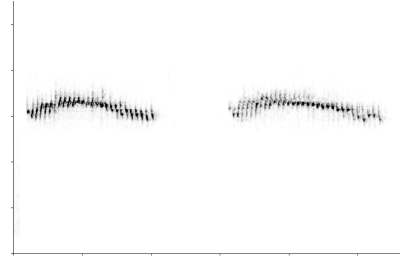
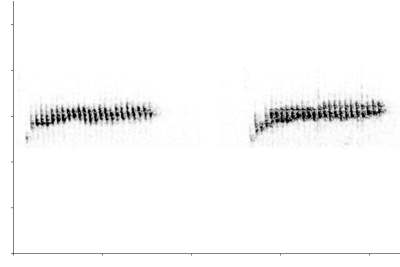
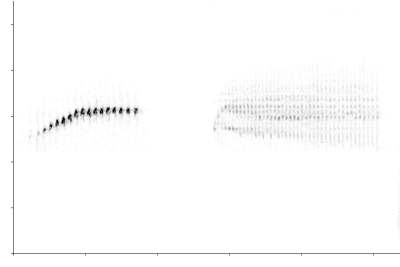
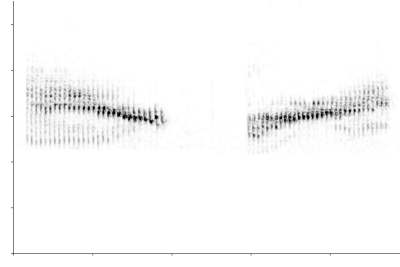
First and last song in sound file depicted
First and last song in sound file depicted
Click on spectrograms to download sound files
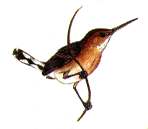
![]()
Song Description:
The song of the Long-billed Gnatwren is a musical trill. Individuals have multiple songtypes which rise and fall in pitch.
![]()
Song Measures:
The Long-billed Gnatwren's trilled songs are 1.77 ± 3.5 seconds long, although very long trills (i.e. as long as 4.5 seconds) are given infrequently. They are given at an average rate of one every six seconds (N = 5 long songbouts from five different individuals) although they may be given much more quickly in response to playback. The trill is composed of a series of very short syllables which rise and fall between a maximum frequency of 3580 ± 240 Hz and a minimum frequency range of 2590 ± 210 Hz (N = 50 songs, 10 from each of five different individuals). Gnatwrens seem to possess three major songtypes; trills which rise in pitch from beginning to end (e.g. both songs in example two above), trills which fall in pitch (e.g. the first two songs in example four above), and trills which rise then fall (e.g. both songs in example one above). Rarely trills are an atonal rattle (e.g. the last song in example three above). All songtypes are occasionally prefixed by a short low chirp syllable.
![]()
Singing Behaviour:
Gnatwrens dart about quickly through low forest brush as they sing, cocking their tail and bobbing it up and down as they move. They sing continuously through the early to mid-morning, but they may be heard singing in the afternoon as well. When I played back the song of a neighbouring bird to a singing gnatwren, he quickened the pace of his song (but did not perceptibly change songtypes) and approached the speaker to within 0.5 meters almost immediately, suggesting this song has an important function in territory defense.
![]()
Habitat:
Since they prefer the thickest brush in the forest, Long-billed Gnatwrens are heard more often than seen. I heard many of them along the paths in the thick second-growth forest near Nueva Becal.
![]()
Return
to Bird Songs of the Yucatan Main Page
All
information and photographs copyright Daniel J. Mennill 1999.
No recordings or other information from this site may be used without
written permission from me.
Please email me (dmennill AT
uwindsor DOT ca) and I will happily grant permission for any
non-commercial or education purposes.